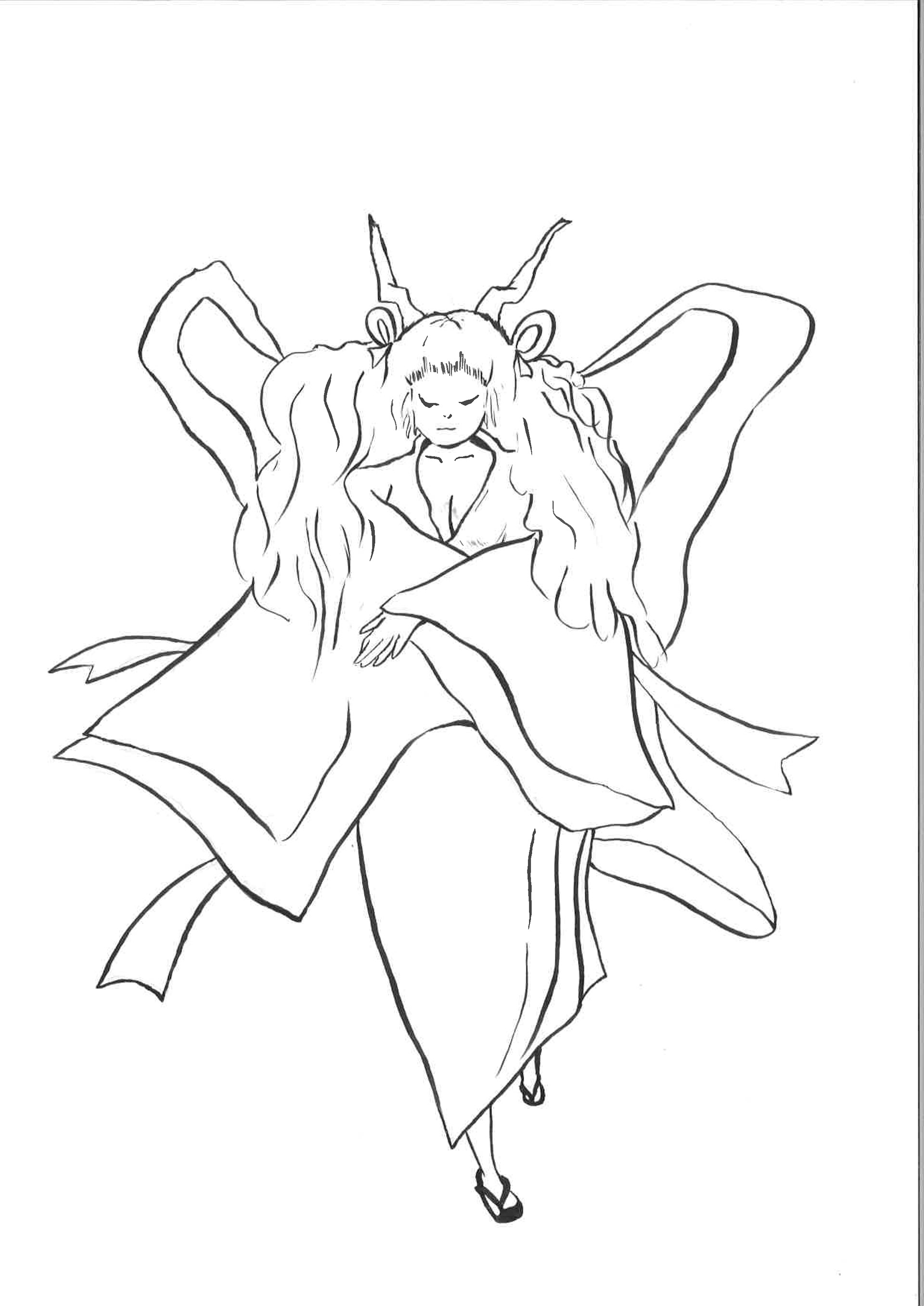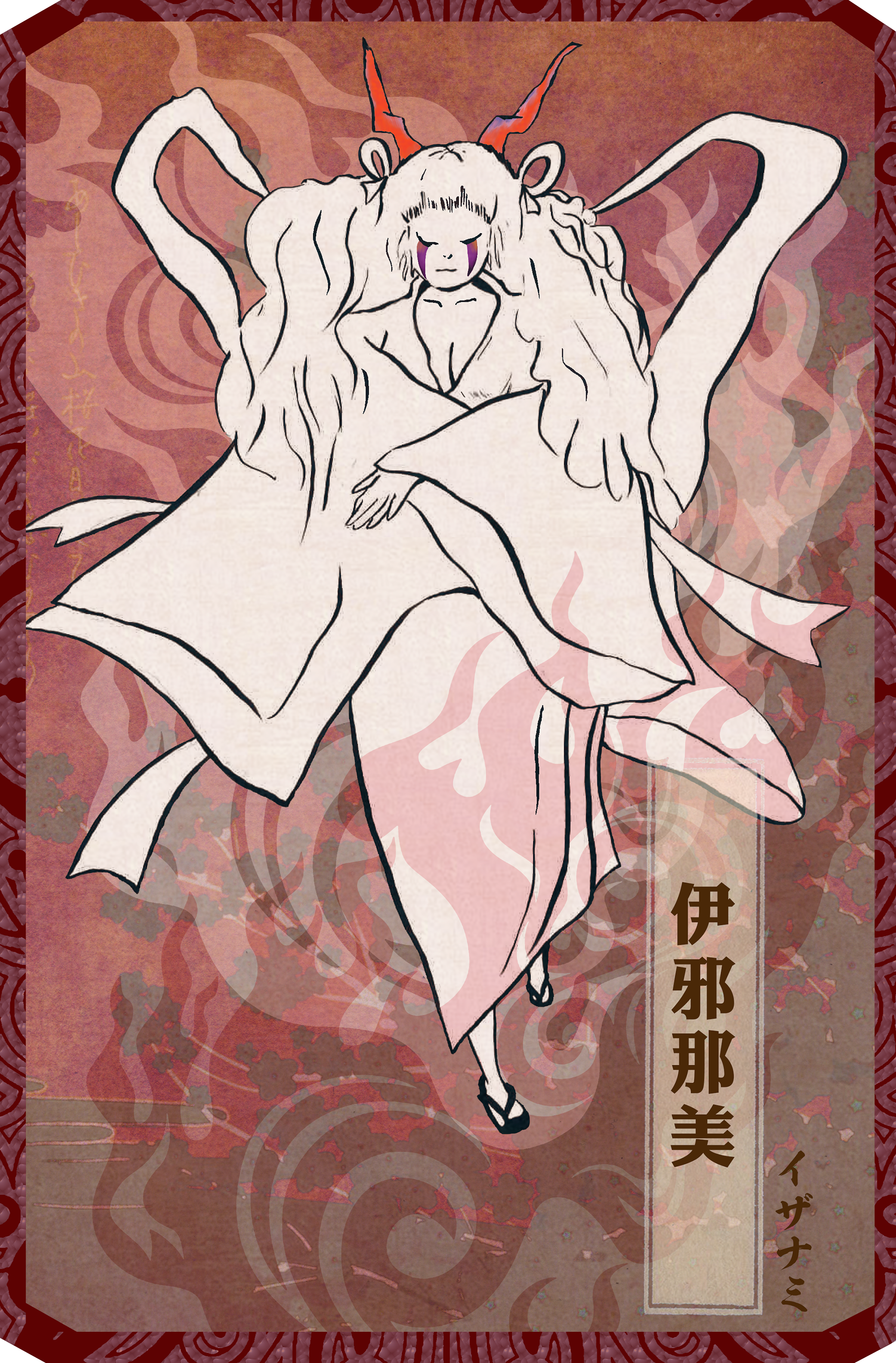旅飯見 Issue9 女神的見面會 專題 The project of "Goddess' Gathering", an online psychological quiz in pantravel.life
在女力盛開的二O一六年五月,和有緣的女神見一面吧。集合傳統台灣女神信仰、日本女神信仰與多篇旅飯站上文章,設計一線上心理測驗,對應不同的女神卡牌解說,點擊詳細內容導入站上文章瀏覽。負責介面設計、視覺設計以及八位女神插畫設計。
First Page
首頁即心理測驗入口,使用者鍵入基本資料並點選,隨即以程式設計師自建推算邏輯公式,給予使用者適合的女神卡畫面。









Sketch of the goddess.
首頁與八位相對應女神的最初草圖,以黑筆於紙上打底稿,進入電腦繪製與調整上色、設計。
木花開/咲耶姫 コノハナノサクヤビメ(Konohananosakuya-hime)
"Cherry tree blossom blooming princess" (her name also appears in a shorter form as "Sakuya-hime"), in Japanese mythology, is the blossom-princess and symbol of delicate earthly life.
天照大神 あまてらすおおみかみ(Amaterasu-ōmikami)
Amaterasu-ōmikami is a part of the Japanese myth cycle and also a major deity of the Shinto religion. She is seen as the goddess of the sun, but also of the universe. The name Amaterasu derived from Amateru means "shining in heaven".
神功皇后 じんぐうこうごう(Empress consort Jingū)
Empress consort Jingū, occasionally known as Empress regnant Jingū (神功天皇), was a Japanese empress who ruled beginning in the year 201. In legend that she is the first female monarch in Japanese history. She is a legend between the real history of the characters.
伊邪那美 イザナミ(Izanami-no-Mikoto)
In Japanese mythology, Izanami-no-Mikoto (Japanese: 伊弉冉尊 or 伊邪那美命, meaning "she who invites") is a goddess of both creation and death, as well as the former wife of the god Izanagi-no-Mikoto. She is also referred to as Izanami-no-kami.
天鈿女 アメノウズメ(Ame-no-Uzume-no-Mikoto)
Ame-no-Uzume-no-mikoto is the goddess of dawn, mirth and revelry in the Shinto religion of Japan, and the wife of fellow-god Sarutahiko Ōkami. She famously relates to the tale of the missing sun deity, Amaterasu Omikami. Her name can also be pronounced as Ama-no-Uzume. She is also known as Ōmiyanome-no-ōkami, an inari kami possibly due to her relationship with her husband.
觀世音菩薩 (Guanyin Bodhisattva)
Guanyin is an East Asian bodhisattva associated with compassion as venerated by Mahayana Buddhists. She is commonly known as the "Goddess of Mercy" in English and Gayatri in Hindi. In Taiwan, Guanyin, meaning "[The One Who] Perceives the Sounds of the World".
媽祖 (Mazu)
Mazu, also known by several other names and titles, is a Chinese sea goddess, the deified form of the historical Lin Moniang, a Fujianese shamaness traditionally dated to c. 960 – c. 987. Revered after her death as a patron of seafarers, including fishermen and sailors, her worship spread throughout China's coastal regions and Chinese communities throughout Southeast Asia. She was thought to roam the seas, protecting her believers through miraculous interventions. She is now generally regarded by her believers as a powerful and benevolent Queen of Heaven, a role in which she is sometimes syncretized with similar figures, such as Guanyin and the Virgin Mary. Mazuism is most popular on Taiwan; her temple festival is a major event throughout the country, with the largest celebrations around her temples at Dajia and Beigang.
瑤池金母 (Queen Mother)
The Queen Mother of the West, known by various local names, is a goddess in Chinese religion and mythology, also worshipped in neighbouring Asian countries, and attested from ancient times.








Mobile UI Design